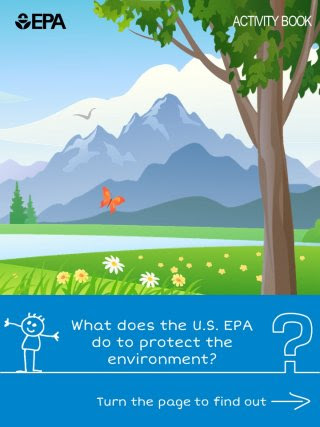|
|
|
|
|
Apply Now for the P3 National Student Design Competition
Attention College Students: EPA is now accepting applications for Phase I of the 15th Annual P3 Awards, a national student design competition focusing on people, prosperity and the planet (P3) (https://go.usa.gov/xnmc7). This collegiate design competition promotes the use of scientific and engineering principles in creating innovative projects to address challenges and develop real world solutions. EPA is seeking applications in research areas of air quality, clean and safe water, land revitalization, and safer chemicals in the marketplace. Applications are due February 7, 2018.
The P3 program is a two-phase team competition. For the first phase, interdisciplinary student teams submit proposals to compete for $15,000 grants for project ideas addressing environmental solutions. Recipients use the funding to research and develop their design projects during the academic year. In the spring, teams compete for P3 Phase II grant funding of up to $75,000 to implement their projects in a real world setting.
The P3 Student Design Competition is part of EPA’s Sustainable and Healthy Communities (SHC) Research Program (https://go.usa.gov/xnmcF), which supports the development of science and tools to help communities make better decisions toward a healthy society and environment. |
|
EJ Grant Opportunity Now Available
Proposals Due February 16, 2018.
The EJCPS program provides funding to support community-based organizations in their efforts to collaborate and partner with local stakeholder groups (e.g., local businesses and industry, local government, medical providers, and academia) as they develop and implement solutions that address environmental and/or public health issues for underserved communities. |
|
New EPA Activity Book for Elementary Age Students
 How do you describe to students what the EPA does? How do you describe to students what the EPA does?
Use our newest activity book for elementary age students to help introduce them to EPA. Kids can learn about the different ways the EPA works to protect our environment and our health. It's a simple, straightforward guide suitable for children of all ages.
Download the PDF. (https://go.usa.gov/xn946)
Find more downloadable and hardcopy resources at the National Service Center for Environmental Publications. (https://www.epa.gov/nscep) |
|
Apply Now for Teacher and Student Awards
 Applications are now being accepted for teacher and student awards. Applications are now being accepted for teacher and student awards.
Know an individual or group of K-12 students working on an environmental stewardship or conservation project? Tell them about thePresident's Environmental Youth Award (PEYA) (http://go.usa.gov/3u7XB)
Are you a K-12 teacher connecting the environment to your classroom? Read about the Presidential Innovation Award for Environmental Educators (PIAEE) (http://go.usa.gov/3u7XQ).
Applications are due March 1, 2018. |
|
Rediscover NOAA Planet Stewards Education Project
 The NOAA Climate Stewards Education Project is now the NOAA Planet Stewards Education Project! The NOAA Climate Stewards Education Project is now the NOAA Planet Stewards Education Project!
The NOAA Planet Stewards Education Project (PSEP) provides formal and informal educators working with elementary through college aged students the knowledge and resources to build scientifically-literate individuals and communities who are prepared to respond to environmental challenges monitored by NOAA.
NOAA PSEP also supports educators in the development and implementation of projects involving hands-on activities that conserve, restore, and protect human communities and natural resources.
|
|
We encourage you to share EPA's Environmental Education eNewsletter with your colleagues. To subscribe, visit: http://www2.epa.gov/newsroom/email-subscriptions
Office of Public Engagement and Environmental Education
Office of the Administrator / U.S. Environmental Protection Agency |